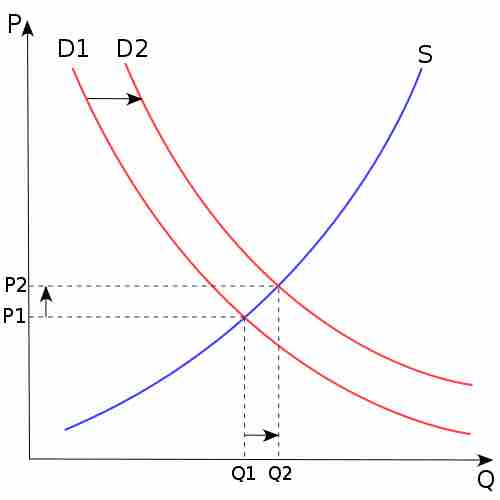Supply, Demand, and Pricing
Supply and demand is an economic model of price determination in a market. It concludes that in a competitive market, the unit price for a particular good will vary until it settles at a point where the quantity demanded by consumers (at current price) will equal the quantity supplied by producers (at current price), resulting in an economic equilibrium of price and quantity.
The four basic laws of supply and demand are:
- If demand increases and supply remains unchanged, then it leads to higher equilibrium price and higher quantity.
- If demand decreases and supply remains unchanged, then it leads to lower equilibrium price and lower quantity.
- If supply increases and demand remains unchanged, then it leads to lower equilibrium price and higher quantity.
- If supply decreases and demand remains unchanged, then it leads to higher equilibrium price and lower quantity.
Equilibrium is defined as the price-quantity pair where the quantity demanded is equal to the quantity supplied, represented by the intersection of the demand and supply curves. Market equilibrium is a situation in a market when the price is such that the quantity that consumers wish to demand is correctly balanced by the quantity that firms wish to supply.
Economics assumes that the consumer is a rational decision maker and has perfect information. Therefore, if a price for a particular product goes up and the customer is aware of all relevant information, demand will be reduced for that product. Should price decline, demand would increase. That is, the quantity demanded typically rises causing a downward sloping demand curve. A demand curve shows the quantity demanded at various price levels.

Price affected by supply and demand
The price P of a product is determined by a balance between production at each price (supply S) and the desires of those with purchasing power at each price (demand D). The diagram shows a positive shift in demand from D1 to D2, resulting in an increase in price (P) and quantity sold (Q) of the product.
As a seller changes the price requested to a lower level, the product or service may become an attractive use of financial resources to a larger number of buyers, thus, expanding the total market for the item. This total market demand by all buyers for a product type (not just for the company's own brand name) is called "primary demand. " Additionally, a lower price may cause buyers to shift purchases from competitors, assuming that the competitors do not meet the lower price. If primary demand does not expand and competitors meet the lower price, the result will be lower total revenue for all sellers.
Demand-oriented pricing focuses on the nature of the demand curve for the product or service being priced. The nature of the demand curve is influenced largely by the structure of the industry in which a firm competes. That is, if a firm operates in an industry that is extremely competitive, price may be used to some strategic advantage in acquiring and maintaining market share. On the other hand, if the firm operates in an environment with a few dominant players, the range in which price can vary may be minimal.